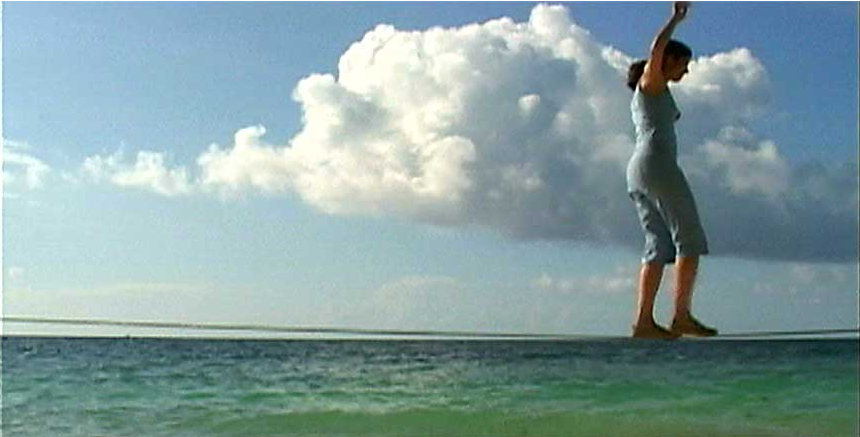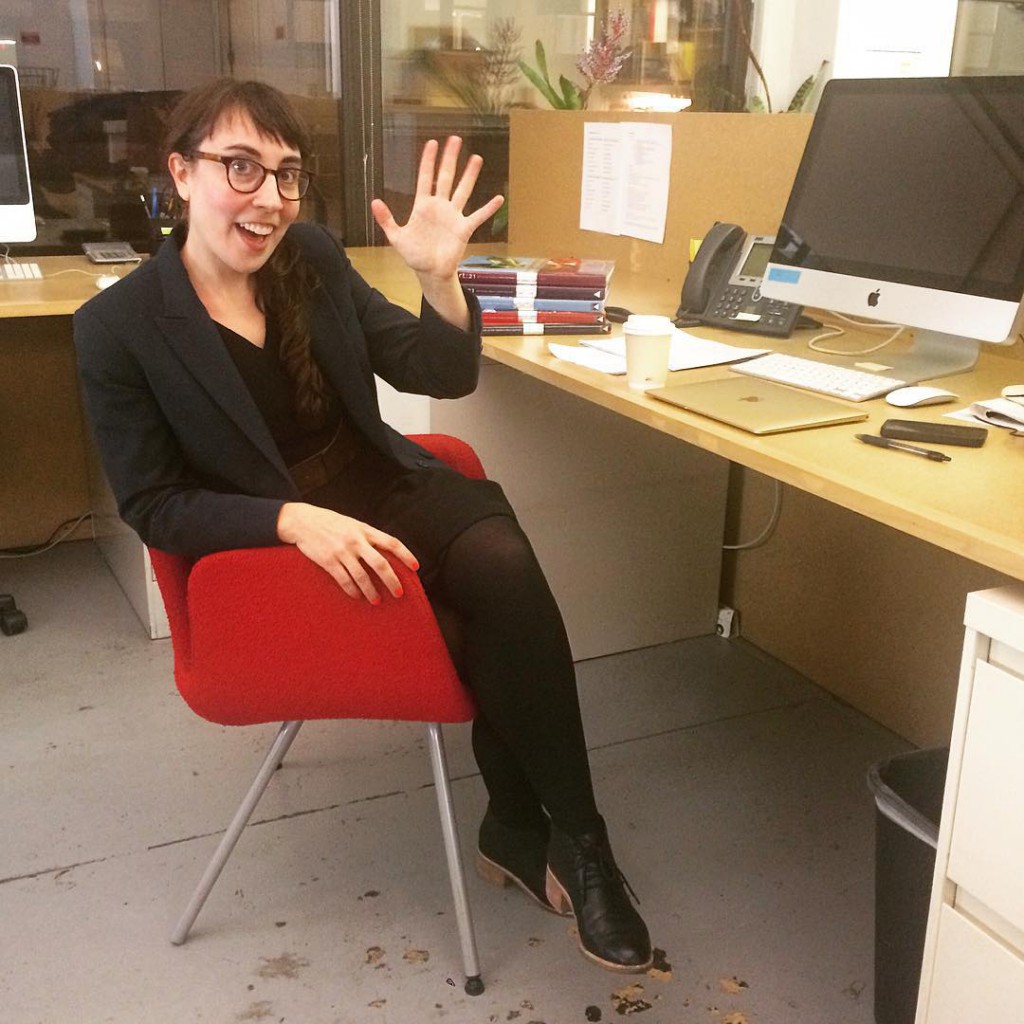
Janine Antoni. Production still from the “Art in the Twenty-First Century” Season 2 episode, “Loss & Desire,” 2003. Segment: Janine Antoni © Art21, Inc. 2003
While my friends and colleagues were spending their winter breaks getting some R&R on sandy beaches in the Caribbean, I was happily watching some of ART21’s more than three hundred videos on an old-yet-trusty HD projector. As the newly named executive director of ART21, I had many hours of content to brush up on. Although I was sedentary, I was at the same time thinking about movement—and not only because it’s the subject of this month’s ART21 Magazine. In the past year, movement has been on my mind a lot, specifically the movement of people. During a recent trip to Mexico City’s magnificent National Museum of Anthropology, where the diagrams and dioramas about prehistoric human life spark the imagination, I was reminded that the movement of people across this planet has long been at the root of cultural exchange. Emblazoned in my mind is a visualization of the migratory patterns of the first Americans, trekking across the land bridge that is now the Bering Strait.
Cuddled up on my living-room sofa, I flipped between videos of Thomas Hirschhorn—a German artist who in 2013 produced a (then ambitious and now legendary) public-art project called Gramsci Monument on the grounds of the Forest Houses in the Bronx—and a New York Close Up film featuring the more renegade actions of the Bronx-born artist Abigail DeVille, who, through small sculptural interventions in rapidly changing urban spaces like Harlem, seeks to reclaim forgotten histories. Both artists were performing their own small migratory movements by expanding their projects outside the studio. As I pondered what Hirschhorn and DeVille were demonstrating in such different ways, my thoughts jumped to the movement of information and in whose hands it spreads. This is a hot-button topic in an age of digital overload, one defined by the diversification of media and the viral nature of digital content—and as a cultural producer and commentator, I cannot help but think about it. Recently, every artist who I have written about or talked to is interested in this issue. What we call it changes all the time: a few terms are transmission, distribution, dissemination, dispersal. In an ART21 video from more than a decade ago, Kiki Smith defines art astutely, as “something that moves from your insides into the physical world.” There are now increasing numbers of thinkers who believe that the very movement of information is a creative act.
As the new director, I have begun to ponder with my colleagues the future of this incredible organization, and the question of movement is central to how we think about art and culture in 2016 and beyond. Happily, ART21 has already been taking this approach. Through its distributed content, ART21 has championed the movement of information—the conveyance of ideas about art—and made it central to its mission. If the media theorist Marshall McLuhan was right—that modes of communication constitute the key forces shaping a society’s structure and culture—then I predict ART21 will remain a central transmitter of that. So stay tuned in! ART21 will be migrating across platforms and chasing artists’ movements, as it always has—both inside and outside the studio.

ART21 executive director Tina Kukielski at the ART21 offices in New York City, January 2016. Photo by Jonathan Munar for @art21org on Instagram.



